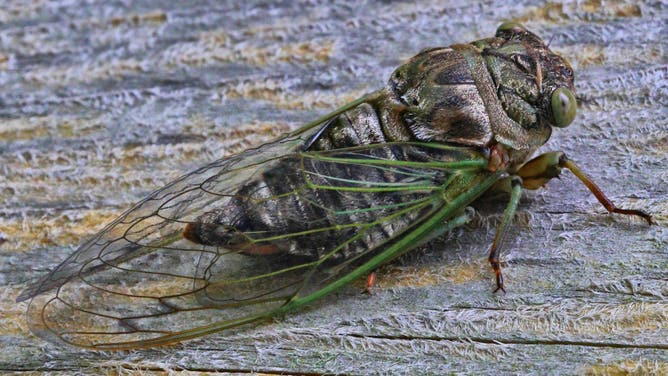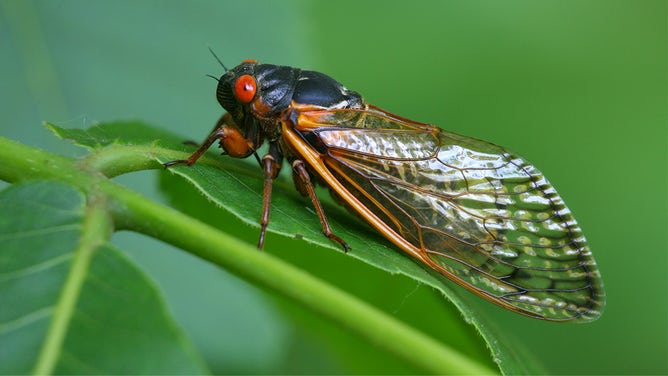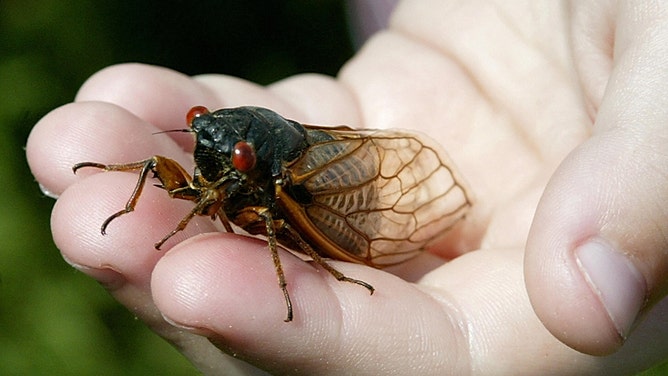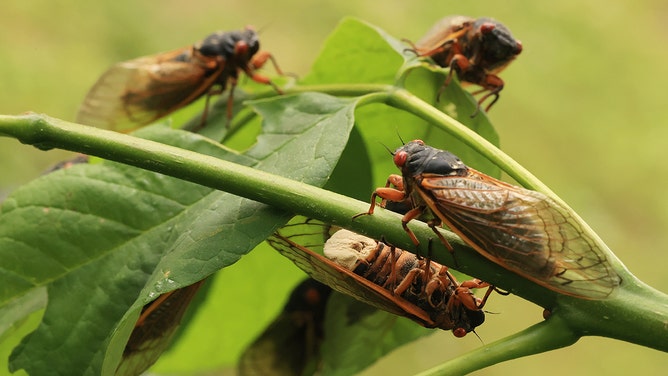Emergence of trillions of cicadas peaks across US but deafening sounds to continue
There are 12 broods of cicadas with 17-year life cycles and three broods with 13-year life cycles. The insects are not harmful to animals or humans, but their collective sounds can be as loud as a lawnmower or motorcycle.
If you can't beat them, eat them: Creative plans for massive cicada return
One trillion cicadas are expected to emerge with warm weather across the U.S. this year. One Carolina man is getting creative with ways to get rid of the cicadas. He threw a dinner party for his friends featuring the insect in every course.
The country has made it to the peak of a double cicada emergence, but bug experts say their deafening sounds will continue through Memorial Day and into early summer.
The natural phenomenon began in the South in late April, with the 13-year Brood XIX group emerging, but were joined by the 17-year Brood XIII group in recent weeks in the Midwest.
The groups of cicadas started emerging when ground temperatures reached a stable 65 degrees, which was a signal to the bugs to leave their habitat along underground tree roots.
While the insects are largely harmless, some humans have resorted to eating them, trying to burn them and even calling police over their loud mating calls.
The brood’s collective sounds can be as loud as a lawnmower or motorcycle and are louder on hot, sunny days.
GIANT BUG FOUND AT AN ARKANSAS WALMART IDENTIFIED AS A JURASSIC-ERA INSECT
While a group of cicadas emerges every year, the specific broods encountered this year last simultaneously emerged in 1803.
Due to the lack of overlapping territories of broods, experts at the University of Connecticut believe few, if any, areas will see both groups.
If there is a community that could see both Brood XIII and Brood XIX, it is Springfield, Illinois, but even in this Midwest town, the populations will be indistinguishable based solely on appearance.
Despite their abundance, the bugs are not harmful to humans or pests but might slightly damage non-mature trees during their egg-laying process.

US Forest Service Cicada map
(US Forest Service / FOX Weather)
EMERGING CICADAS’ CACOPHONY TRIGGERS CALLS TO POLICE IN SOUTH CAROLINA FROM CONFUSED RESIDENTS
When will the cicadas go away?
Despite the emergence of the insects, it’ll likely take several weeks before peace and quiet returns to communities from the South to the Midwest.
According to University of Illinois experts, cicadas live about a month to a month-and-a-half above ground, which means the chirping will last until mid-June in many areas and, where the emergence just started, it could last into July.
The sounds are only produced by males, who will start to die after mating, while the females will expire after laying eggs in trees.
"They only have three stages to their life cycle: an egg, which turns into a nymph and then an adult," Molly Keck, an entomologist and pest specialist with the Texas A&M AgriLife Extension Service, said during an interview. "Adults will lay their eggs, usually on the bark of trees, and when they hatch, the nymphs will crawl into the ground."
Depending on which brood the nymphs are part of, they’ll bury into the ground for either 13 or 17 years.
Brood XIV, situated in the Ohio and Tennessee valleys as well as the Northeast, is slated to emerge next year.




